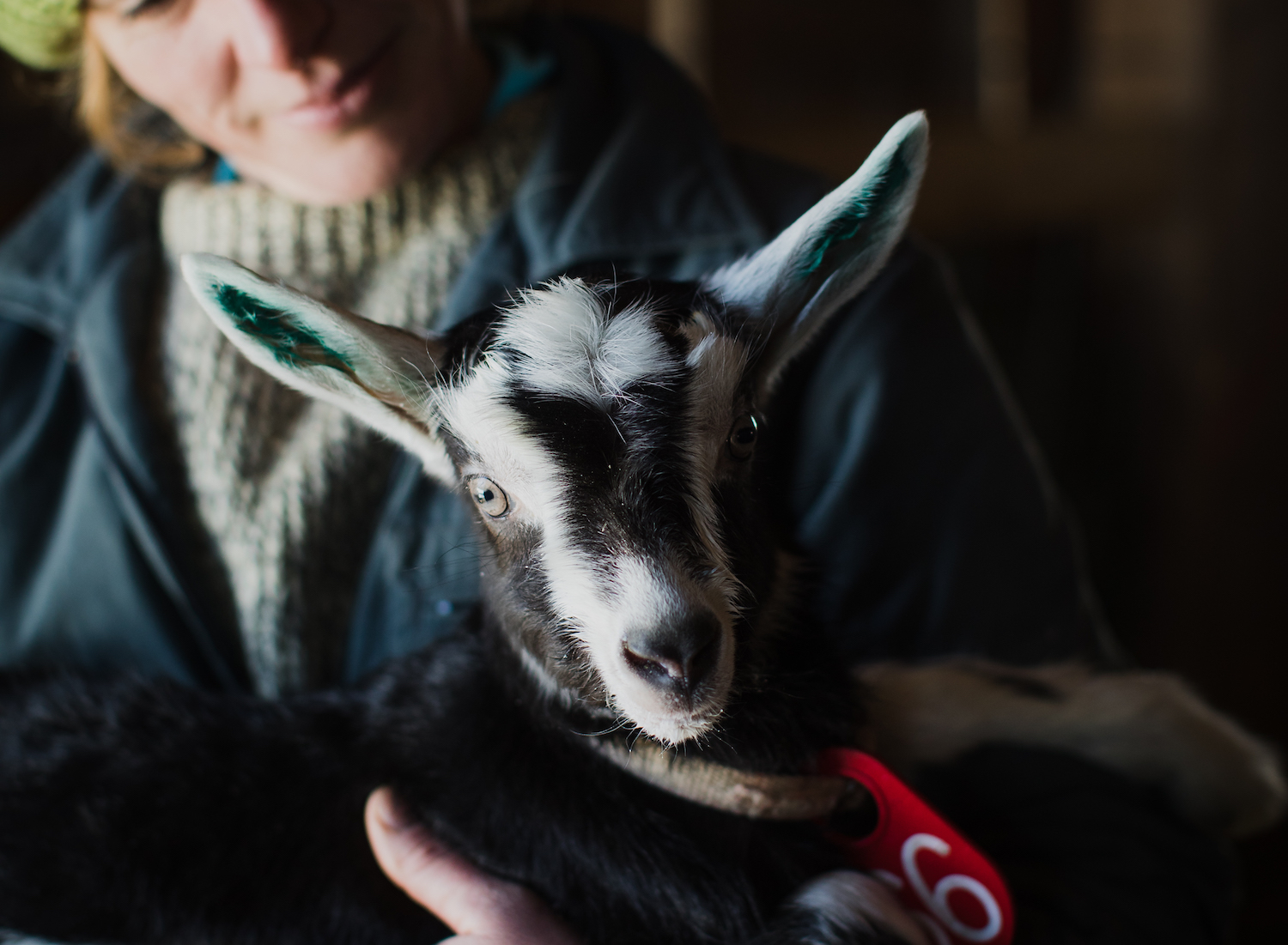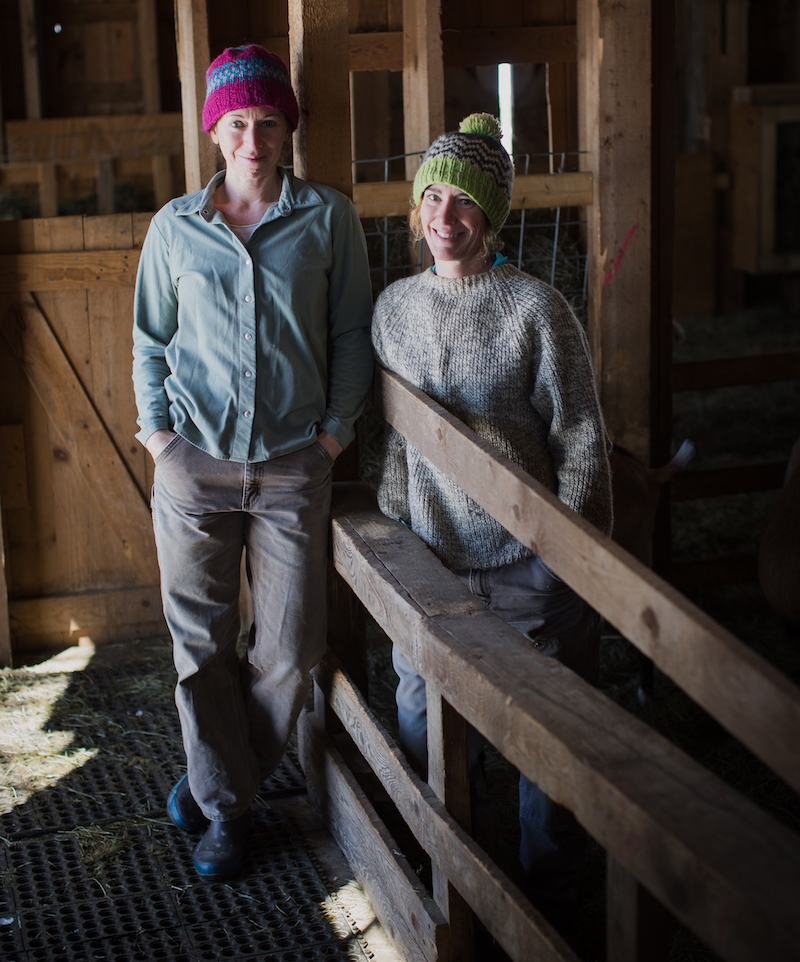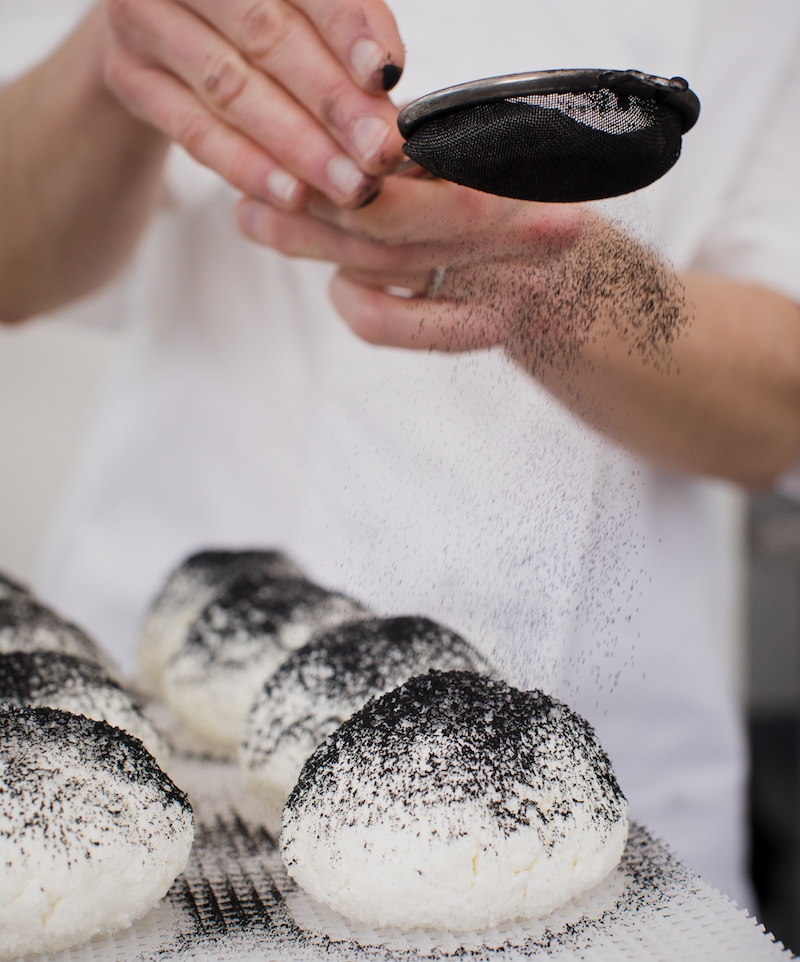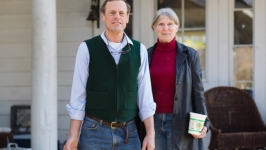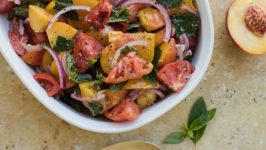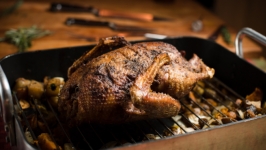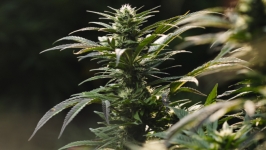Sage Farm Goat Dairy
Much like grazing goats, career paths don’t always follow straight lines.
Sisters Molly and Katie Pindell happily admit they could watch goats for hours. “Goats are naturally curious,” Katie explains. “They like to explore their world and can figure out puzzles like how to open our gate latches. And they’re super friendly. Sheep will often run away from people, but goats will come right up to engage with you.”
The women started Sage Farm Goat Dairy in 2008, in the rural hills above Stowe village. Their meandering career paths were perfectly suited to running a farm. For almost a decade after college (Colby College for Molly, College of the Atlantic for Katie), they traversed the United States, separately pursuing their passions. Molly went to culinary school, worked as a personal chef, studied food and ag policy, wrote freelanceabout food and farms and learned animal husbandry and cheesemaking on a goat farm. Katie did research for wildlife conservation projects around the country and Canada and juggled teaching, restaurant and landscaping gigs. They gravitated to Stowe in the mid-2000s, drawn to the skiing and natural beauty. And the knowledge that they wanted to work with their hands.
Intent on making farmstead goat cheese, Molly and her husband, Dave Wilkens, bought the 26-acre former sheep farm from a woman who was elated that the property would remain in agriculture. With a solid barn and pastures already in place, all Molly needed was goats. “We purchased our seven starters, purebred American Alpines, from Laini Fondiller of Lazy Lady Farm. I knew her cheeses and respect her commitment to breeding and genetics.”
Next step: Build a cheese room. “Our carpenter dad came up from Keene, New Hampshire,” says Katie, “and we all collaborated on the project in 2008. Building that space with Dad was a really cool way to start our business. Neither Molly nor I had done construction before, but we learned how to frame and Sheetrock. We gained so many new skills that year, and now we’re pretty comfortable with all sorts of hands-on projects.”
Molly’s daughter, Juliette, was born the summer they bought the farm. Her son, Soren, arrived in May 2009, just as their first milking season began and cheesemaking commenced. “I spent a lot of time that summer with him either strapped to me or in a little Moses basket on the floor of the cheese room.”
“Our realms are mostly defined,” Molly continues. “Katie oversees the herd, and I’m in charge of the cheese. We’re both pretty nerdy and conscientious.” “You mean, particular and anal,” Katie laughs. “We both do the farmers’ markets. I take the Waitsfield Saturday farmers’ market and Molly does Sundays in Stowe.” Molly also handles deliveries to shops and restaurants in the Stowe, Waterbury and Burlington area.
Yet they each can do the other’s job if needed. Rounding out the team are Molly’s husband, Dave, and Katie’s partner, Bob Sabolefski, who help with bookkeeping, firewood, putting up hay and pitching in with markets. Bob also has a sugaring operation on the farm with about 400 taps; he makes a maple soda which he sells on draft at farmers’ markets.
The women have no interest in expanding. They’ve developed a perfect size operation that the two of them can run, with the help of an intern in milking season, which runs from late March through December. Katie notes, “Our land is well suited to this size herd. We move them to new pasture daily, so they grow really fast and stay healthy, which translates into high-quality milk.”
Katie does most of the milking, twice a day. “Our goats produce more than a gallon a day on average. We’re getting as much milk out of 20 goats as some dairies get out of 30 or more goats. I think that’s a reflection of the care we give our animals and our management decisions.” A gallon of milk makes roughly a pound of cheese, and in the heart of the season,
Molly has 40 gallons of milk for each batch of cheese. Molly makes cheese three or four days a week and rotates through a dozen varieties. “We’re small enough to be nimble and that keeps it fresh for me. I started out making chévres and bloomy rind cheeses because they’re also my favorites. We also have a traditional salty feta, a Camembert that’s aged a bit longer, a couple of washed rind cheeses, and Spruce, a scoopable oozy cheese wrapped in strips of bark Katie harvests from some of our Norway spruces. I’m working on a new washed curd cheese with a semisoft consistency. In spring I make a maple Banon, which is wrapped in maple leaves soaked in a little maple liqueur. Some of these cheeses are seasonal and depend on the quantity and profile of the milk. Late-fall milk is super rich and creamy, whereas spring milk tends to be fresher and lighter.”
“I think the care Molly puts into creating these cheeses is above and beyond,” Katie adds. “Our chévre isn’t the typical densely pressed log. Ours are hand-ladled into little disc molds, which creates a nice layered texture. We’ll pick edible fl owers and herbs from my garden, and Molly decorates each piece of cheese, like an art project. It’s time consuming but that’s what we can do on a small scale.”
Even after a decade, Molly still loves the tactile nature of the process. “Every step requires me touching cheese with my hands. Some are pure meditation, like wrapping cheese; I could wrap cheese for hours, listening to public radio. My life outside the creamery is fairly hectic with two kids ages nine and 11, so the cheese room is my peaceful zone, whether I’m making or flipping cheeses, cleaning equipment, mopping the fl oors or washing the walls.”
The year begins in earnest in March when the kids are born. “Kidding season is our bonding time,” Molly says. “We spend most of the month in the barn, pretty much around the clock, one of us helping a mom give birth and the other bottle-feeding the newborn kids. It’s the most important period of our business and we’re totally immersed.”
Katie adds, “We trudge back and forth to the barn deliriously tired in the super cold weather but it’s also kinda fun. Last year we had 45 kids. We pick a diff erent theme each year for their names: We’ve done weather phenomenon, celestial bodies, Shakespearean characters, birds, Greek goddesses. This year is beverages. Can we name a goat Beer? Last year Molly’s kids chose candy as the theme so, yeah, we have Snickers, Pixy Stix and Starburst.”
When asked about the economics of running a small dairy, Molly pauses. “None of us are pricing our products in a way that covers all our costs, so it’s almost impossible to make a viable income. However, I can raise my children on a farm and make cheese, and I’m super content with that. The four of us have built a pretty amazing business, but we’re not doing this to get rich. It’s the quality of life that clearly appeals to all of us.” Katie offers her take: “It’s all about choices. We’ll stick to making cheese and working with the animals. Using our hands, which is why we got into this business in the first place.”


